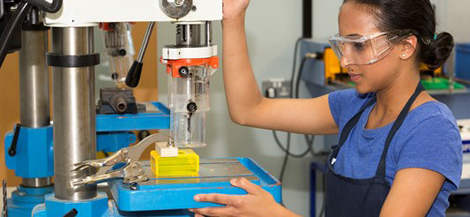
The need for inspiring Design and Technology teachers has never been higher
With the schools back some pupils will be getting their first tastes of design in the classroom, yet there’s a need for more inspiring and informed Design and Technology (D&T) teachers.
We asked Richard Green, chief executive of the Design and Technology Association about the challenge facing designers and engineers at the very first steps:
There is a real need for great D&T teachers in the UK – and where better to look for top talent than in those working in the industry already.
A few months ago, Stephen Holmes wrote an insightful piece here about why the UK needs to support D&T education, a cause I know all too well.
While we continue to take incredible strides in ensuring D&T remains an engaging, vibrant and varied subject, shaking off its outdated craft-based image, we’re faced with a different challenge – ensuring a steady stream of great D&T teachers in our schools.
The notion that D&T is really named ‘woodwork, metalwork and needlework’ is an old but pervasive one. This couldn’t be further from the truth.
How can teaching D&T be anything other than exciting and stimulating today – given the variety of traditional, modern and smart materials, design tools and manufacturing processes now available in schools; the ability to incorporate PIC technology to control products, and, as a result, the ability for pupils to design and make products that are equivalent in quality to commercial products?
Another primitive assumption is the idea that all teachers are fresh from university.
According to the National College of Teaching and Leadership’s (NCTL) ‘Get Into Teaching’ campaign, almost 50 per cent of those who registered an interest in teaching last year alone were career changers. In other words, professionals who have had industry experience but chose to go into teaching.
Why, I hear you ask? Well, having spoken to some of these career changers, the reasons are varied and personal to each individual. However there are lots of recurring themes: from lack of job satisfaction and progression in their current role, through to wanting to help young people realise their ambitions.
I speak to teachers every day about the immense job satisfaction that comes from working with young, bright students, full of fresh creative energy.
D&T is a very unique subject in the UK curriculum – it’s the only subject where creativity and innovation is combined with technical and practical skills, allowing young people to design and make solutions to real problems.
Moreover, the rest of the world looks to us as a leader in D&T education, with the UK’s curriculum is widely seen as the best in the world.
As well as full-time roles, there are part-time posts and job-share roles too – in fact, nearly a quarter of teachers work part-time.
Personally, I think that when a school appoints two teachers to job-share one role, they often get more diverse skills and experience than the equivalent of one full-time teacher.
Provided the teachers are committed and communicate well with each other, this can be a real bonus for the school and the pupils.
Some schools employ ‘Designers in Residence’, providing studio or workshop space for professionals in return for part-time involvement in teaching and mentoring pupils.
At the D&T Association, we would definitely welcome an increase in this type of approach as we see it as win-win: It exposes pupils and teachers to practising designers and their work, and give designers the ability to showcase live design briefs and projects to bright young students, and tap into their fresh creative ideas.
Great D&T teachers are more vital than ever and in high demand.
It is a subject which helps to create the entrepreneurs, engineers, computer scientists and designers of the future, and is therefore directly tied to the economic success of the nation.
D&T professionals considering a switch into teaching need to have a real interest and commitment to working with young people, as well as the ability to make the subject engaging, exciting and motivating for pupils.
If you are truly passionate about design and technology here in the UK, one of the best ways to benefit our industry is to pass down your knowledge and skills on to the next generation.
To find out more about what you can do – from becoming a D&T teacher, to all the other options – visit the Get into Teaching website for more information and support.






